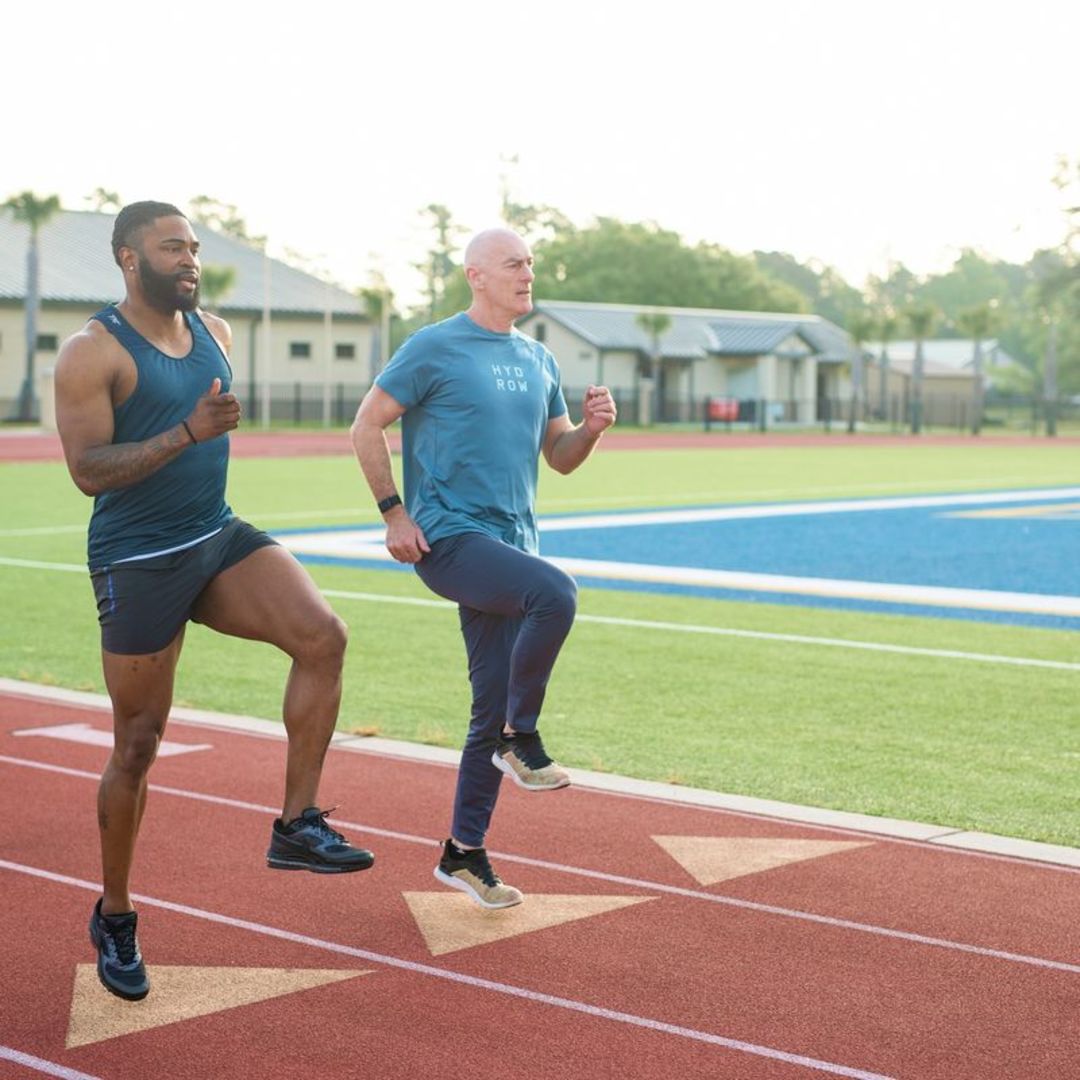What Is Circuit Training? Key Components and Benefits to Consider

Circuit training is a popular and effective form of exercise that combines cardiovascular and strength training in a structured, high-intensity format. It is commonly used in both fitness and sports settings, as well as in physical education and athletic training programs in colleges and universities.
Looking to learn more about circuit training and how it can be added to your fitness routine? This article will explore:
Let’s get started!
The history of circuit training
Circuit training has a rich history that dates back to the early 20th century. It was originally developed by R.E. Morgan and G.T. Anderson in 1953 at the University of Leeds in the United Kingdom. The goal was to create a comprehensive exercise program that could efficiently improve both cardiovascular fitness and muscular strength. The original concept involved a series of nine to 12 exercises, performed in a circuit, with minimal rest between exercises.
Over time, circuit training has evolved and adapted to suit various fitness needs and objectives. While its primary goal has always been to improve overall physical fitness, it has become a versatile training method used in various contexts, including sports training, military fitness, and physical education programs at the high school and college levels.
The components of circuit training
Circuit training is typically composed of several key components, including:
Exercises
Stations
Time or repetitions
Res intervals
Circuit rounds
Warm-up and cool-down
Let’s dig into each component further:
1. Exercises
A circuit consists of a series of exercises that can be tailored to the specific fitness goals of the participants. These exercises can include both strength and cardiovascular activities. Common strength exercises include push-ups, squats, lunges, and dumbbell curls, while cardiovascular exercises may involve jumping jacks, burpees, or stationary biking.
Related Blog: 15 Best Circuit Training Workouts
2. Stations
Each exercise is performed at a designated station. Stations can be set up in various ways, with equipment or bodyweight exercises. The arrangement can be linear, circular, or in any configuration that best suits the available space and equipment.
3. Time or repetitions
Participants spend a set amount of time or complete a specific number of repetitions at each station before moving on to the next exercise. The duration and intensity can be adjusted to match the fitness level of the participants and the specific goals of the circuit.
4. Rest intervals
Traditionally, there is minimal rest between stations to maintain an elevated heart rate. However, the intensity can be varied by adjusting the rest intervals. Shorter rest periods make the circuit more cardiovascular-focused, while longer rests emphasize strength and power.
5. Circuit rounds
A circuit may consist of one or more rounds. After completing all exercises in one round, participants may rest briefly before starting a new round. The number of rounds can be adjusted to increase or decrease the overall workout intensity.
6. Warm-up and cool-down
A proper warm-up and cool-down are essential to prevent injuries and promote recovery. These components are usually included at the beginning and end of a circuit training session.
The benefits of circuit training
Circuit training offers a range of benefits, which make it an appealing choice for fitness and athletic team programs. Some of the key advantages include:
Efficiency
Improved cardiovascular fitness
Enhanced strength
Variety
Group dynamics
Adaptability
Weight management
Let’s dig in more on each benefit of circuit training below:
1. Efficiency
Circuit training combines cardiovascular and strength exercises in a single session, providing a comprehensive workout in a relatively short amount of time.
2. Improved cardiovascular fitness
The constant movement and limited rest periods elevate the heart rate, leading to improvements in cardiovascular fitness, endurance, and stamina.
3. Enhanced strength
Circuit training can be designed to target various muscle groups, promoting strength and muscle development.

What’s your fitness style?
Take our quiz and receive a customized 14-day training program.
4. Variety
The diversity of exercises within a circuit prevents boredom and plateaus, ensuring participants stay engaged and challenged.
5. Group dynamics
Circuit training can be done in groups, fostering a sense of camaraderie and support among participants, which can be motivating and fun.
6. Adaptability
Circuits can be adjusted to cater to different fitness levels, making them accessible to a wide range of individuals, from circuit training beginners to advanced athletes.
7. Weight management
The high-intensity nature of circuit training can support weight management and fat reduction by burning calories and increasing metabolic rate.

Explore Hydrow’s library of Circuit Training workouts from around the world.
How circuit training is implemented in college settings
In college settings, circuit training is often integrated into physical education programs, fitness centers, and athletic training regimens. Here are some ways in which circuit training is implemented at the college level:
Physical education courses: Many colleges require students to complete physical education courses as part of their general education requirements. Circuit training is a popular choice for these classes because it offers a well-rounded fitness experience and can accommodate large groups of students with varying fitness levels.
Fitness centers: College campuses often have fitness centers equipped with the necessary facilities and equipment for circuit training. Students and faculty can utilize these facilities to engage in structured circuit workouts independently.
Athletic training: College athletes incorporate circuit training into their training programs to improve overall athletic performance. The versatility of circuit training allows coaches to tailor workouts to the specific needs of different sports and positions.
Recreational programs: Some colleges offer recreational programs or clubs that focus on circuit training. These programs provide a supportive and social environment for students to maintain their fitness and well-being.
Intramural sports: Intramural sports leagues frequently incorporate circuit training into their training routines to enhance team performance and individual player fitness.
How to design effective circuit training programs
To create an effective circuit training program at any level, consider the following principles:
Assessment: Begin by assessing your fitness level and goals. This information will help in designing appropriate exercises and structuring your circuit.
Exercise selection: Choose exercises that are safe and appropriate for you. Consider your fitness level and any pre-existing medical conditions or injuries.
Progression: As you improve your fitness, the circuit should be adjusted to ensure continued challenges. This can involve increasing the intensity, adding more rounds, or incorporating more advanced exercises.
Safety: Safety is paramount. Proper technique and form should be emphasized to prevent injuries. Additionally, equipment should be well-maintained and checked regularly.
Variation: Keep the circuit interesting by introducing new exercises and changing the order or arrangement of stations. This prevents monotony and keeps you engaged.
Time management: Ensure that the circuit fits within the available time frame, allowing for both the workout and necessary warm-up and cool-down periods.
Discover the power of circuit training
Circuit training is a versatile and effective form of exercise that is widely used in multiple settings to promote overall fitness and well-being. It offers a range of benefits, including improved cardiovascular fitness, enhanced strength, efficiency, and adaptability to different fitness levels.
If you’re looking to incorporate circuit training into your fitness routine, be sure to check out Hydrow’s app, which offers circuit training workouts that will help with any exercise goals you’re aiming to achieve.

Did You Know?
Over 90% of Hydrow members are still active one year later.






